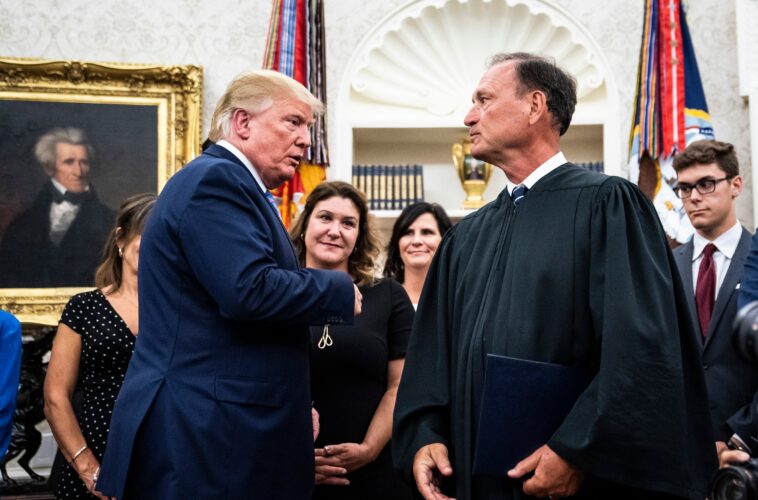

Trump Administration’s Approach to Environmental Regulation: Reconsidering the Past, Reshaping the Future
Policy Reassessment Beginning with Greenhouse Emissions
The latest move by President Donald Trump’s administration has signalled a refreshing but polarizing reassessment of previously established policies. This wave of changes involves stepping back from set proceedings before the Supreme Court and reassessing its stance on crucial legal issues. The most significant among these is the dispute over California’s stringent standards for automobile emissions and promoting electric vehicles.
Emissions and Clean Air Act: Contextualizing the Conflict
Under the administration of former President Joe Biden, the Federal Emission Standards were reinforced, granting California an exemption in 2022. This trend of environmental regulation was a part of Biden’s approach to tackling climate change. The Clean Air Act governs these regulations that inherently provide the Environmental Protection Agency (EPA) the authority to override state laws. However, the clause that allows the EPA to permit special exemptions for states to establish stricter regulations than federal policies underlies the current controversy.
The Trump Administration’s Stance
Upon re-entering the Oval Office, the Trump administration took an immediate stand against these exemptions, particularly involving California. The argument against these waivers revolves around how they diminish demands for liquid fuels, impacting fuel producers significantly, evident from examples like the Valero’s Diamond Alternative Energy litigation case.
The EPA and States’ Rights: Balancing Regulations
Traditionally, states and cities have been limited in their ability to enforce regulations stricter than the federal law. However, due to the EPA’s exceptional waivers, California received approval to enforce its own regulations, a move that, according to fuel producers, negatively impacts their businesses.
The Bias Towards Federal Authority
Here lies the essence of the Supreme Court’s apprehension towards these waivers, rooted in an inherent skepticism of federal agencies wielding expansive authority. The current 6-3 conservative majority in the Court, including Trump-appointed Justices, is more likely to support a more restricted regulatory approach, as evident from previous court decisions curtailing the EPA’s ability to protect wetlands and reduce ozone emissions.
Reassessing the Legal Standing
The Acting Solicitor General, Sarah Harris, petitioned the Supreme Court to pause the litigation for reevaluation. This pause could eradicate the need for the court to decide whether the challengers, like Valero and other states, have legal standing to even challenge the waiver’s reinstatement.
A Closer Look at the EPA’s Reinstatement
The EPA’s decision under review reinstated a waiver allowing California to establish its own vehicle emissions limits and zero-emission vehicle mandate through 2025. This move was seen as a reversal of the 2019 decision during Trump’s first term that rescinded the waiver, further underlining the fluctuating stance on environmental regulations.
The New Wave of Changes
President Trump’s first executive order upon reassuming office was to repeal the new waiver that Biden’s EPA had granted to California. This allowed the state to end the selling of gasoline-only vehicles by 2035, a move that was subsequently adopted by 11 other states.
The Legal Implications
Legal observers predict that Trump’s reversal of several key precedents, changes in major court cases, and the review of federal regulations targeting firearms and gender-affirming medical care for transgender minors exemplify the dynamic legal field under his administration. As such, it embarks on a journey to reevaluate and reshape the country’s climate and energy policies.
Ending Remarks
The legal and political spheres can anticipate a rigorous review and likely reform of several policies and positions under the Trump administration. The implications are particularly significant in the environmental field. This ordeal underlines the importance of the intricate dynamics between the federal and state government involving environmental policies, highlighting the role of the EPA and the Supreme Court in shaping the future of American policy-making.
Originally Post From https://www.reuters.com/business/environment/trump-administration-asks-supreme-court-pause-cases-it-reconsiders-policy-2025-01-24/
Read more about this topic at
Final Rule: Multi-Pollutant Emissions Standards for Model …
Proposed Rule: Multi-Pollutant Emissions Standards for …


